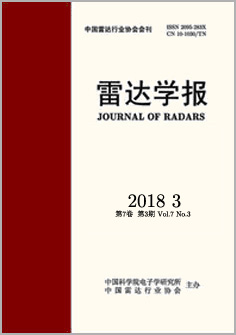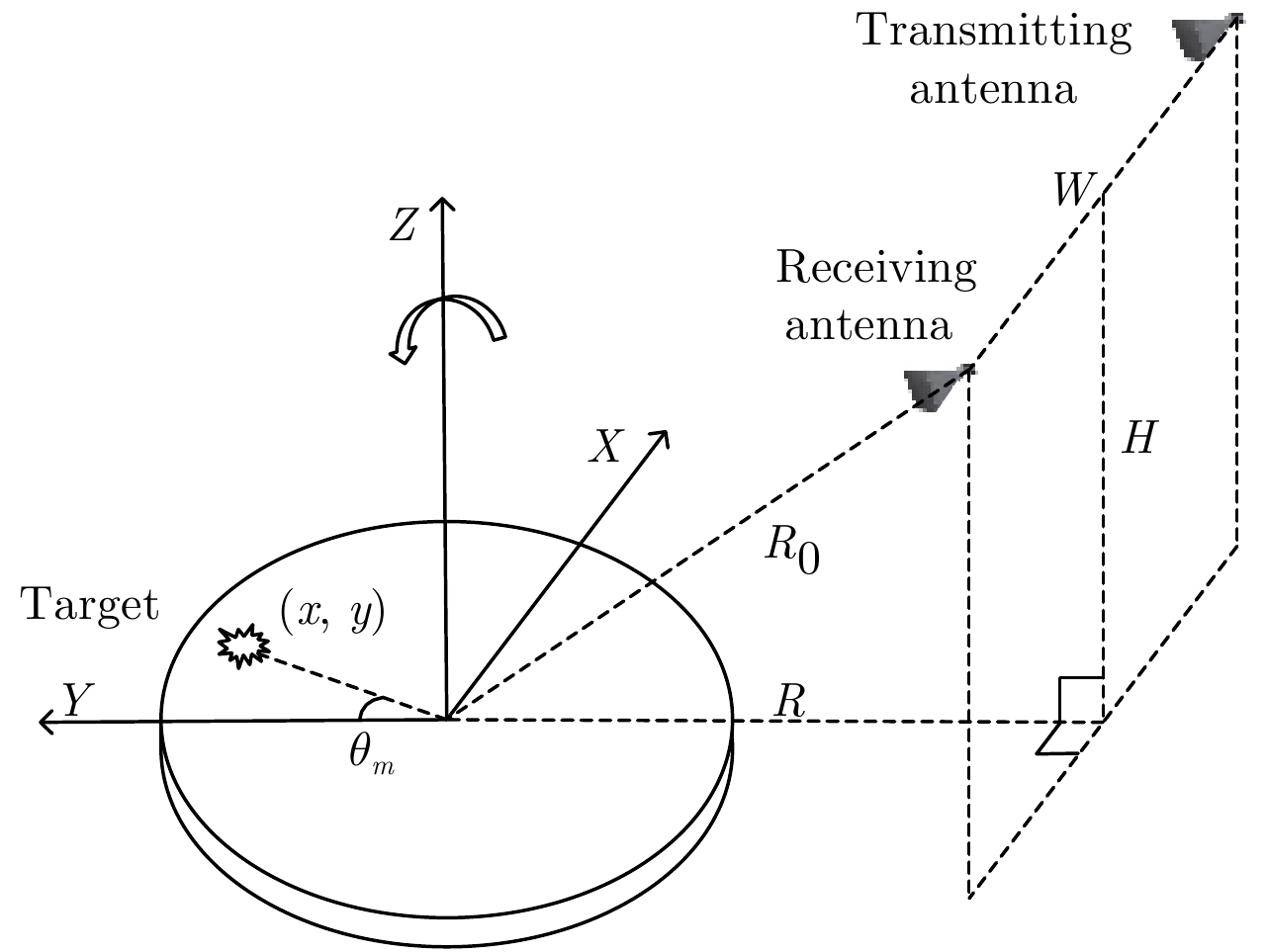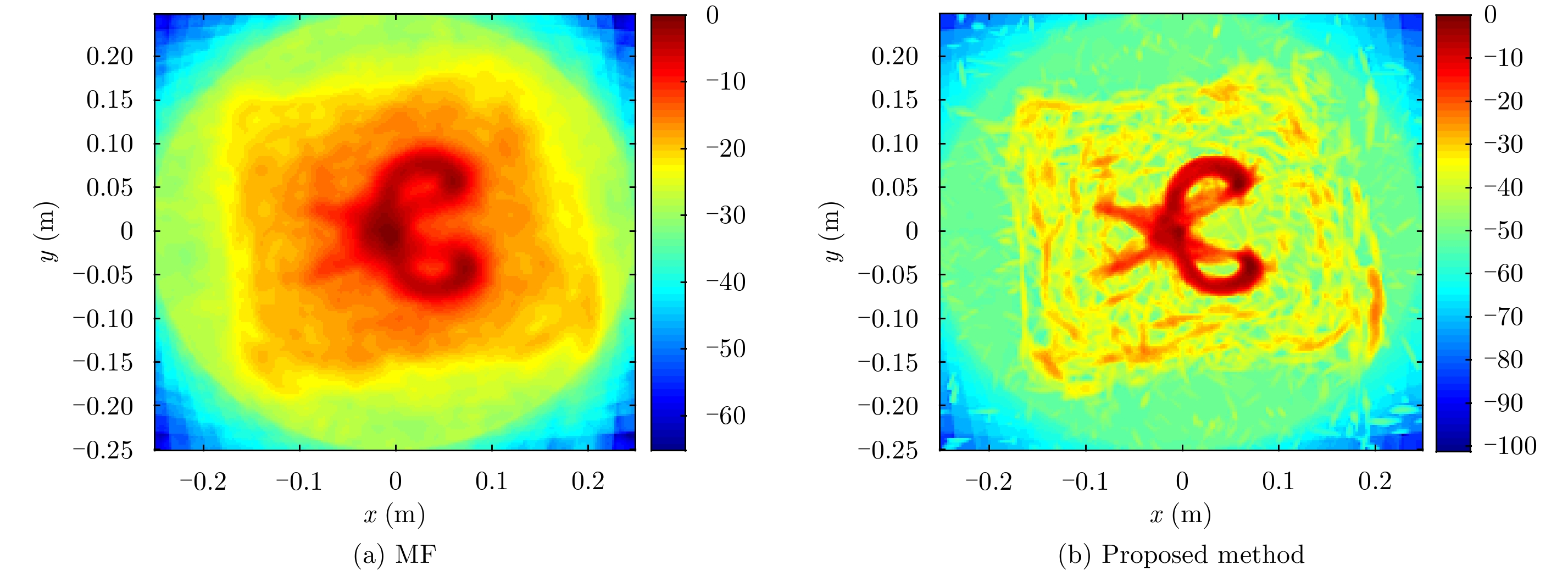| [1] |
Hu K B, Zhang X L, Shi J, et al. A novel synthetic bandwidth method based on BP imaging for stepped-frequency SAR[J]. Remote Sensing Letters, 2016, 7(8): 741–750.
|
| [2] |
Yiğit E. Compressed sensing for millimeter-wave ground based SAR/ISAR imaging[J]. Journal of Infrared, Millimeter, and Terahertz Waves, 2014, 35(11): 932–948.
|
| [3] |
Zhang S S, Zhang W, Zong Z L, et al. High-resolution bistatic ISAR imaging based on two-dimensional compressed sensing[J]. IEEE Transactions on Antennas and Propagation, 2015, 63(5): 2098–2111. DOI: 10.1109/TAP.2015.2408337. |
| [4] |
Kreucher C and Brennan M. A compressive sensing approach to multistatic radar change imaging[J]. IEEE Transactions on Geoscience and Remote Sensing, 2014, 52(2): 1107–1112. DOI: 10.1109/TGRS.2013.2247408. |
| [5] |
Wang T Y, Lu X F, Yu X F, et al. A fast and accurate sparse continuous signal reconstruction by homotopy DCD with non-convex regularization[J]. Sensors, 2014, 14(4): 5929–5951. DOI: 10.3390/s140405929. |
| [6] |
Ding L and Chen W D. MIMO radar sparse imaging with phase mismatch[J]. IEEE Geoscience and Remote Sensing Letters, 2015, 12(4): 816–820. DOI: 10.1109/LGRS.2014.2363110. |
| [7] |
Ding L, Chen W D, Zhang W Y, et al. MIMO radar imaging with imperfect carrier synchronization: A point spread function analysis[J]. IEEE Transactions on Aerospace and Electronic Systems, 2015, 51(3): 2236–2247. DOI: 10.1109/TAES.2015.140428. |
| [8] |
Liu C C and Chen W D. Sparse self-calibration imaging via iterative MAP in FM-based distributed passive radar[J]. IEEE Geoscience and Remote Sensing Letters, 2013, 10(3): 538–542. DOI: 10.1109/LGRS.2012.2212272. |
| [9] |
Wang X, Zhang M, and Zhao J. Efficient cross-range scaling method via two-dimensional unitary ESPRIT scattering center extraction algorithm[J]. IEEE Geoscience and Remote Sensing Letters, 2015, 12(5): 928–932. DOI: 10.1109/LGRS.2014.2367521. |
| [10] |
Yang L, Zhou J X, Xiao H T, et al.. Two-dimensional radar imaging based on continuous compressed sensing[C]. Proceedings of the 5th Asia-Pacific Conference on Synthetic Aperture Radar (APSAR), Singapore, 2015: 710–713. DOI: 10.1109/APSAR.2015.730630. |
| [11] |
Guan J C, Yang J Y, Huang Y L, et al. Maximum a posteriori-based angular superresolution for scanning radar imaging[J]. IEEE Transactions on Aerospace and Electronic Systems, 2014, 50(3): 2389–2398. DOI: 10.1109/TAES.2014.120555. |
| [12] |
Parekh A and Selesnick I W. Enhanced low-rank matrix approximation[J]. IEEE Signal Processing Letters, 2016, 23(4): 493–497. DOI: 10.1109/LSP.2016.2535227. |
| [13] |
Lin Z C, Chen M M, and Ma Y. The augmented lagrange multiplier method for exact recovery of corrupted low-rank matrices[R]. arXiv preprint arXiv:1009.5055, 2010. DOI: 10.1016/j.jsb.2012.10.010. |
| [14] |
Pedone M, Bayro-Corrochano E, Flusser J, et al. Quaternion wiener deconvolution for noise robust color image registration[J]. IEEE Signal Processing Letters, 2015, 22(9): 1278–1282. DOI: 10.1109/LSP.2015.2398033. |
| [15] |
Zhu J, Zhu S Q, and Liao G S. High-resolution radar imaging of space debris based on sparse representation[J]. IEEE Geoscience and Remote Sensing Letters, 2015, 12(10): 2090–2094. DOI: 10.1109/LGRS.2015.2449861. |
| [16] |
Horn R A and Johnson C R. Matrix Analysis[M]. Cambridge: Cambridge University Press, 1990.
|
| [17] |
Donoho D L. De-noising by soft-thresholding[J]. IEEE Transactions on Information Theory, 1995, 41(3): 613–627. DOI: 10.1109/18.382009. |




 Submit Manuscript
Submit Manuscript Peer Review
Peer Review Editor Work
Editor Work





 DownLoad:
DownLoad:





